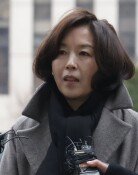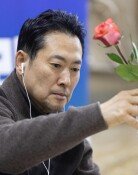The first photographer of Joseon
The first photographer of Joseon
Posted December. 25, 2021 07:29,
Updated December. 25, 2021 07:29

“I saw my reflection on a small piece. My true self was engraved on rasaji,” wrote Lee Hang-eok, a junior official who was a member of the entourage accompanying the Joseon Delegation to the Qing Dynasty. Lee set eyes on photographs, a new culture at that time, at the Russian legation in Beijing on Jan. 29, 1863 of the lunar calendar. A Russian photographer took pictures of the Delegation. After seeing the printed photos a few days later, Lee described it as a “small piece” and recorded his feelings in his travel journal.
This book is a compilation of 30-year research into the history of Korean photography by the author, who is a professor of Myongji University Graduate School of Records, Archives & Information Science and head of the Research Institute for the Visual Language of Korea. A 100-year history of Korean photography is covered in one book.
According to the author, photography has been put to practical use in the West since the 1840s, but the Joseon Dynasty first encountered it in 1863. At first, it was just watching it as a tourist like Lee Hang-eok did. After Kim Yong-won, who served as a government official, opened the first photo studio in Joseon in 1883, photo studios began to open in the country one by one. It was the beginning of a true history of Korean photography, where Koreans take pictures on Korean soil.
The book covers the 100-year history of photography, including the introduction of photography and how Japan used photography to justify its colonial rule over Korea. The book also deals with somewhat difficult part of the history, such as the emergence of artistic photographers in the late 1920s and the story right after liberation, when the left and the right wings were divided into socialist realism and salon photography.
The book also introduces important figures in the history of Korean photography, ranging from Shin Nak-gyun, a pioneer of Korean photography who served as the head of The Dong-A Ilbo’s photography department since 1934 and led Dong-A’s erasure of Japanese national flag from the chests of the Korean marathoners in an illustration, to Koo Bon-chang, who consistently made experimental and unconventional attempts, including philosophical interpretation of death since the 1980s.
The book contains about 300 photos, including the group photos of the Joseon Delegation taken in 1863, whose faces all look stiff, and modern photos in boundless forms. Thanks to the photos, the almost 600-page book can be read lightly like seeing a photo exhibition.
Hyo-Ju Son hjson@donga.com







